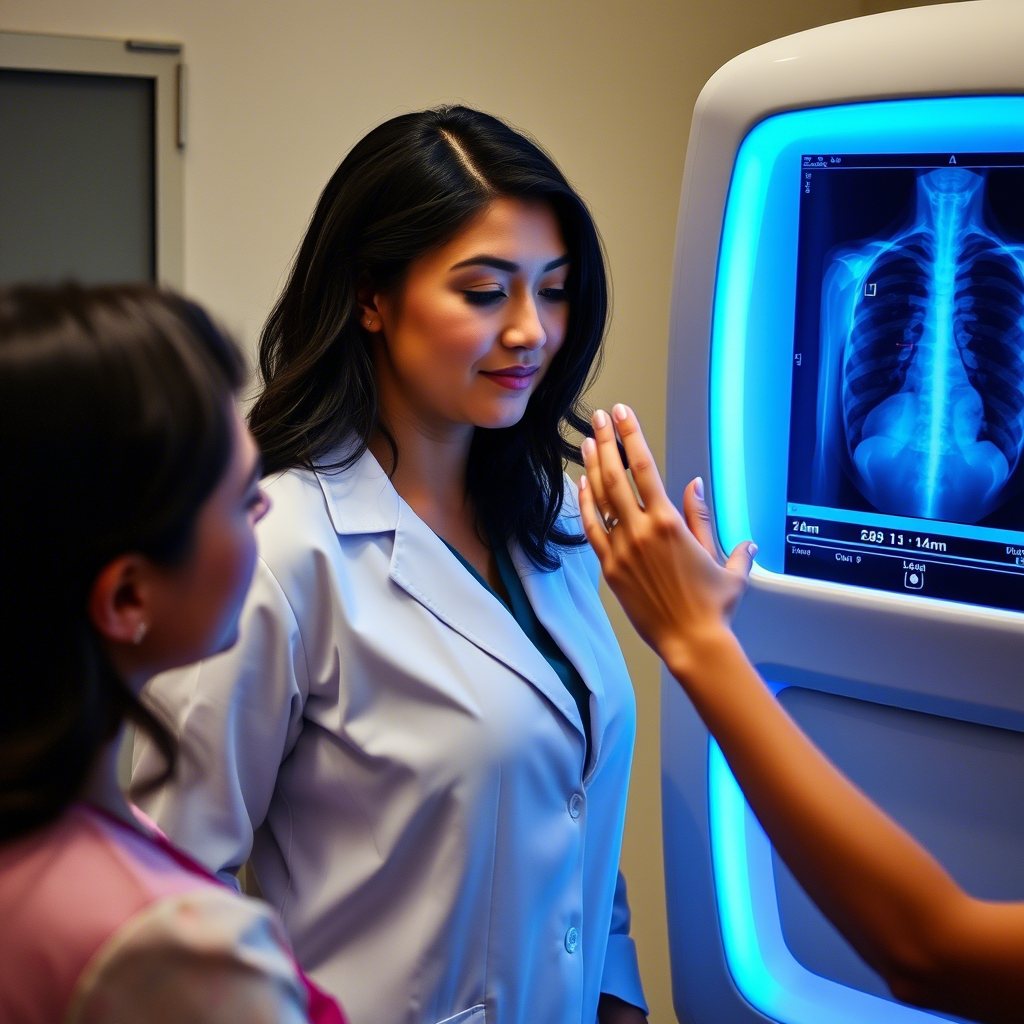El tratamiento de la salud de la mujer es multifacético y requiere un enfoque integral que incluye la atención preventiva, el diagnóstico, el tratamiento y el manejo de diversas condiciones de salud. Al comprender los diferentes aspectos de la salud de la mujer y tomar medidas proactivas, las mujeres pueden mantener una salud y un bienestar óptimos. Es esencial que las mujeres tengan acceso a servicios de atención médica de calidad y estén empoderadas con el conocimiento para tomar decisiones informadas sobre su salud. Al hacerlo, podemos mejorar los resultados de salud para las mujeres y contribuir a una sociedad más saludable en general.
La salud de la mujer abarca una amplia gama de aspectos de bienestar físico, emocional y mental que son exclusivos de las mujeres. Es crucial abordar estos aspectos a través de una atención médica integral que incluya cuidado preventivo, diagnóstico, tratamiento y manejo de diversas condiciones de salud. El tratamiento de la salud de la mujer no se limita solo a la salud reproductiva; implica un enfoque holístico hacia el bienestar general. Según la Organización Mundial de la Salud (OMS), la salud de la mujer está influenciada por una compleja interacción de factores biológicos, sociales y ambientales. Garantizar el acceso a servicios de atención médica de calidad es vital para mejorar los resultados de salud de las mujeres. En este artículo, exploraremos las diferentes facetas del tratamiento de la salud de la mujer, destacando áreas clave de enfoque y estrategias para mantener una salud óptima.
Cuidado Preventivo y Detecciones
El cuidado preventivo es una piedra angular del tratamiento de la salud de la mujer. Las detecciones y chequeos regulares pueden ayudar en la detección temprana y prevención de enfermedades.
Importancia de las Detecciones
- Las mamografías regulares son cruciales para la detección del cáncer de mama.
 Los estudios han demostrado que la detección temprana a través de la mamografía puede mejorar significativamente las tasas de supervivencia.
Los estudios han demostrado que la detección temprana a través de la mamografía puede mejorar significativamente las tasas de supervivencia. - Las pruebas de Papanicolaou son esenciales para la detección del cáncer cervical, permitiendo la detección de células pre-cancerosas antes de que se conviertan en cáncer.
- Las pruebas de densidad ósea ayudan a evaluar el riesgo de osteoporosis, particularmente en mujeres postmenopáusicas.
Vacunación y Consejos de Estilo de Vida
- Se recomienda la vacunación contra el VPH para pre-adolescentes y adultos jóvenes para prevenir el cáncer cervical y otras enfermedades relacionadas con el VPH.
- Los proveedores de atención médica a menudo aconsejan sobre cambios en el estilo de vida, como dieta, ejercicio y cesación del tabaquismo, para prevenir enfermedades crónicas.
Evaluación de Riesgos
- Evaluar la historia familiar y la predisposición genética puede ayudar a identificar a las mujeres con mayor riesgo de ciertas condiciones, como el cáncer de mama y ovario.
Opciones de Diagnóstico y Tratamiento
Un diagnóstico preciso seguido de un tratamiento adecuado es crítico para manejar las condiciones de salud de la mujer.
Técnicas de Diagnóstico
- Técnicas avanzadas de imagen como la resonancia magnética y el ultrasonido se utilizan para diagnosticar condiciones como la endometriosis y los fibromas.
- La biopsia y la histopatología son cruciales para diagnosticar cánceres.
Modalidades de Tratamiento
 El tratamiento para condiciones como el cáncer de mama puede incluir cirugía, quimioterapia y radioterapia, a menudo utilizadas en combinación.
El tratamiento para condiciones como el cáncer de mama puede incluir cirugía, quimioterapia y radioterapia, a menudo utilizadas en combinación.- Para condiciones como la endometriosis y los fibromas, las opciones de tratamiento varían desde terapias hormonales hasta intervenciones quirúrgicas.
Medicina Personalizada
- Las pruebas genéticas pueden ayudar a personalizar los planes de tratamiento para pacientes individuales, especialmente en casos de cáncer.
Salud Mental y Bienestar
La salud mental es una parte integral del bienestar general, y las mujeres se ven desproporcionadamente afectadas por ciertas condiciones de salud mental.
Problemas Comunes de Salud Mental
- La depresión y la ansiedad son más prevalentes entre las mujeres, en parte debido a las fluctuaciones hormonales y las presiones sociales.
- Los trastornos alimentarios también tienen una mayor incidencia en las mujeres.
Enfoques Holísticos
 Los centros de bienestar holístico ofrecen terapias como yoga y meditación que pueden ayudar a manejar el estrés y mejorar la salud mental.
Los centros de bienestar holístico ofrecen terapias como yoga y meditación que pueden ayudar a manejar el estrés y mejorar la salud mental.- La terapia cognitivo-conductual (TCC) y otras formas de terapia de conversación son efectivas para tratar diversas condiciones de salud mental.
Sistemas de Apoyo
- Construir una red de apoyo de familiares, amigos y grupos de apoyo puede desempeñar un papel crucial en el manejo de la salud mental.
Salud Reproductiva
La salud reproductiva es un aspecto significativo de la salud de la mujer, abarcando una gama de cuestiones desde la anticoncepción hasta el embarazo y el parto.
Anticoncepción y Planificación Familiar
- Están disponibles varios métodos anticonceptivos, incluyendo anticonceptivos hormonales, métodos de barrera y anticonceptivos reversibles de acción prolongada (ARAP).
- Para obtener más información sobre planificación familiar y servicios de salud reproductiva, puede visitar https://www.mbs-med.com/.
Embarazo y Parto
- La atención prenatal es esencial para monitorear la salud de la madre y el feto durante el embarazo.
- Las opciones para el parto incluyen parto natural, partos asistidos y cesáreas, dependiendo de la salud de la madre y el bebé.
Manejo de la Menopausia
- La terapia de reemplazo hormonal (TRH) y tratamientos no hormonales pueden ayudar a manejar los síntomas de la menopausia.
- Los cambios en el estilo de vida, incluyendo dieta y ejercicio, también pueden aliviar los síntomas menopáusicos.
Manejo de Enfermedades Crónicas
Las mujeres están en riesgo de diversas enfermedades crónicas, algunas de las cuales son más prevalentes o tienen manifestaciones diferentes en mujeres en comparación con los hombres.
Salud Cardiovascular
- La enfermedad cardíaca es una de las principales causas de muerte en mujeres en todo el mundo. Manejar factores de riesgo como la hipertensión, la diabetes y el colesterol alto es crucial.
- Para obtener información detallada sobre el manejo de la salud cardiovascular, puede consultar recursos de salud confiables como la Asociación Americana del Corazón.
Diabetes y Obesidad
- Las mujeres con diabetes están en mayor riesgo de enfermedad cardíaca y otras complicaciones. Manejar los niveles de azúcar en sangre a través de dieta, ejercicio y medicación es vital.
- La obesidad es un factor de riesgo para numerosas condiciones de salud, incluyendo diabetes y enfermedad cardíaca. El manejo del peso a través de cambios en el estilo de vida y, en algunos casos, cirugía bariátrica puede ser efectivo.
Osteoporosis
- Prevenir la osteoporosis implica mantener la densidad ósea a través de la ingesta de calcio y vitamina D, ejercicio y evitar el tabaquismo.

